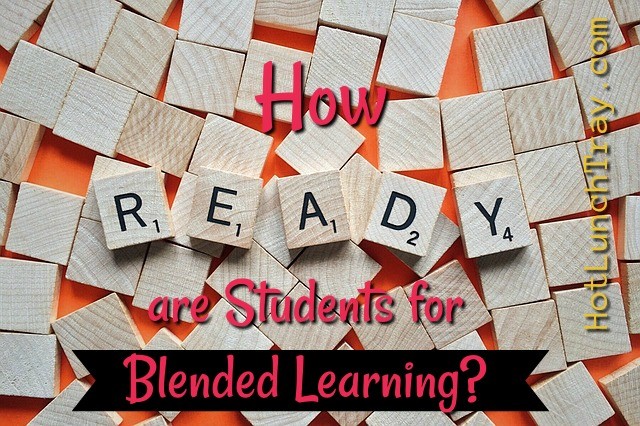Congratulations, you are ready to start blending your class!
Now what about your students?
Educators who pioneered blended learning can offer the next wave of potential blended learning teachers a hand-up. Teachers who elect to implement a blended approach to their classroom are in greater control of student access to materials and are able to guide students through that content. Now, you just have to get your students ready to step into blended learning!
 Younger/older students versus adult learners.
Younger/older students versus adult learners.
The age of your students is sometimes a factor in how you start blended learning. Young students are often less afraid, excited to take risks with technology, and may even be waiting on you to open up to making some of your classwork available online.
Older students can see blended learning as a disruption to how they have learned to do school (and how they’ve learned to succeed) while also appreciating the benefits of asynchronous access to class materials online.
Adult learners are sometimes down-right scared of online learning, especially if they do not see the benefits outweighing the unknown negative possibilities.
With all three age groups it is a good idea to share why you are trying blended learning and what you hope to accomplish by blending your content between a face-to-face and online environment. Offer the ways in which you can offer them (or their parents) support while this is still a new way to learn.
Consider starting out by offering redundant items online: a presentation, communications between classroom and home, due dates, copies of assignments already given to show the benefit of access to classroom content asynchronously. Accelerate the value by replicating, producing, and then directing students to highlights of online discussions from asynchronous discussions. And finally, give some ownership to the class. What would they like to see in the online portion of our classroom?
How to on-board home.
Those younger students come with families. Be mindful that parents do not have (read: like) to take risks. The best way to on board the families of your students is to teach them too. Take opportunities such as Open Houses, Curriculum Nights, and communications home to share demonstrate in-person (or via video for emails) how to find content in the LMS. School cannot be asynchronous for your students without these families!
What content to start with….
You do not have to put everything online all at once – in fact, don’t try that. You can customize the content you make available for maximum benefit to you and your students. Teachers building content in a school/district Learning Management System (LMS) have certain advantages. Advantages might be: LMS features, instructional design structures, and ways to access content are already known by many learners and their families already.
You want a to get a great amount of benefit for as little effort as possible at first. Consider tackling categories: Projects, spelling words, study guides, class discussions, social media first. Then adding a new category in as you and your students are ready. Aim for low stakes items, so parents are not tempted to do work for students. Consider items you may already be offering through face-to-face, but often get questions about, requests for extra copies, or that students could benefit from some extra think time on.
When to share content.
One of the neat things about creating your Blended Learning content is that you can keep it unpublished until you are ready to share it. And you can share just portions of your content at a time. When content appears to your students just in time they do not know if you are one day or one unit ahead.
Whatever platform you use to share your content, a LMS or some other method, make sure that your students, their families, know how to get to your content. This may mean cross-promoting it through email, social media, and newsletters home.
The journey to improve your blended learning content is never really over. So take the feedback you get and reinvest in revising your content. Enjoy the journey!







1 Pingback